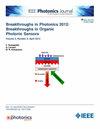基于计算成像的单目三维微piv系统
IF 2.1
4区 工程技术
Q3 ENGINEERING, ELECTRICAL & ELECTRONIC
引用次数: 0
摘要
三维(3D)粒子图像测速(PIV)系统通常由多个摄像机组成。然而,用于测量微尺度速度场的微piv系统缺乏足够的空间来容纳它们。在这项工作中,我们提出了一种基于计算成像的替代方法,使单目微piv系统能够在没有额外硬件或复杂结构的情况下执行3D流场测量。设计了满足要求参数的微观物镜,得到了系统对物体表面不同深度的点扩展函数(PSF)响应。此外,提出了一种基于光学系统psf的粒子数据集生成方法,并构建了深度学习网络进行训练。为了验证该方法的可行性,在实验中捕获粒子图像并将其输入到网络中重建深度图像并构建三维流场。仿真和实验结果表明,测量误差在13.2%以内,表明了所提模型的实用性。本文章由计算机程序翻译,如有差异,请以英文原文为准。
Monocular 3D Micro-PIV System Using Computational Imaging
A three-dimensional (3D) particle image velocimetry (PIV) system typically consists of multiple cameras. However, micro-PIV systems for measuring microscale velocity fields lack sufficient space to accommodate them. In this work we propose an alternative approach based on computational imaging, enabling monocular micro-PIV systems to perform 3D flow field measurements without additional hardware or complex structure. The microscopic objective is designed to satisfy the required parameters, and the point spread function (PSF) responses of the system to different depths of the object surface are obtained. Additionally, a particle dataset generation method based on the PSFs of the optical system is proposed, and a deep-learning network is constructed for training. To validate the feasibility, particle images are captured in experiments and inputted into the network to reconstruct depth images and build three-dimensional flow fields. Simulation and experimental results demonstrate that the measurement deviation is within 13.2%, indicating the practicality of the proposed model.
求助全文
通过发布文献求助,成功后即可免费获取论文全文。
去求助
来源期刊

IEEE Photonics Journal
ENGINEERING, ELECTRICAL & ELECTRONIC-OPTICS
CiteScore
4.50
自引率
8.30%
发文量
489
审稿时长
1.4 months
期刊介绍:
Breakthroughs in the generation of light and in its control and utilization have given rise to the field of Photonics, a rapidly expanding area of science and technology with major technological and economic impact. Photonics integrates quantum electronics and optics to accelerate progress in the generation of novel photon sources and in their utilization in emerging applications at the micro and nano scales spanning from the far-infrared/THz to the x-ray region of the electromagnetic spectrum. IEEE Photonics Journal is an online-only journal dedicated to the rapid disclosure of top-quality peer-reviewed research at the forefront of all areas of photonics. Contributions addressing issues ranging from fundamental understanding to emerging technologies and applications are within the scope of the Journal. The Journal includes topics in: Photon sources from far infrared to X-rays, Photonics materials and engineered photonic structures, Integrated optics and optoelectronic, Ultrafast, attosecond, high field and short wavelength photonics, Biophotonics, including DNA photonics, Nanophotonics, Magnetophotonics, Fundamentals of light propagation and interaction; nonlinear effects, Optical data storage, Fiber optics and optical communications devices, systems, and technologies, Micro Opto Electro Mechanical Systems (MOEMS), Microwave photonics, Optical Sensors.
 求助内容:
求助内容: 应助结果提醒方式:
应助结果提醒方式:


